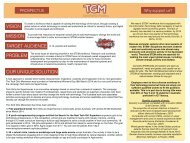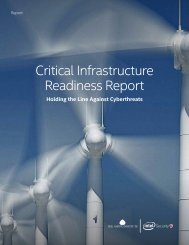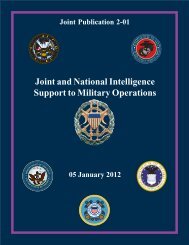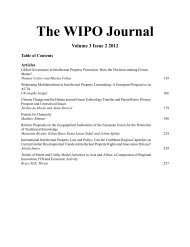Transparency Initiative (EITI)
2eoch1l
2eoch1l
You also want an ePaper? Increase the reach of your titles
YUMPU automatically turns print PDFs into web optimized ePapers that Google loves.
53<br />
from the analysis are quite sobering, given that in most cases<br />
the model has a poor fit. While there is no general rule<br />
of thumb what a ‘good model fit’ is, a minimum of 0.4 (i.e.<br />
40%) explained variance is assumed as a minimum here.<br />
For the variables for which the model meets this requirement,<br />
the cells are highlighted in green. Only for these indicators<br />
does it makes sense to interpret the effect strengths,<br />
indicated by the effect coefficient (in units of the variable)<br />
and its significance. With regard to the level of significance<br />
a maximum of 0.2 for the two-sided test may be acceptable,<br />
the lagged dependent variables are influenced by the nonlagged<br />
independent variables and not the other way around<br />
(highlighted cells in the fourth column). However, the (oneyear)<br />
time lags does not solve the causality issue.<br />
Going by these assumptions, the analysis shows a significant<br />
effect for a country’s <strong>EITI</strong> candidate status on the Foreign<br />
Direct Investment (FDI) inflows, on the time to prepare<br />
and pay taxes and on CPIA fiscal policy rating if a<br />
candidate of the <strong>EITI</strong> (→ cf. Table 1), while its membership<br />
appears to further affect FDI flows and the time to prepare<br />
and pay taxes, and additionally the CPIA equity of public resource<br />
use rating (→ cf. Table 2). However, the rather low significance<br />
levels suggest to assess the relationships rather<br />
carefully.<br />
According to these results, the macro-economic data serves<br />
solely to provide evidence on the influence of <strong>EITI</strong> candidature<br />
and membership only for two indicators respectively:<br />
while <strong>EITI</strong> candidature and membership both seem to<br />
cause the private sector to spend more time on preparing<br />
and paying their taxes, the CPIA fiscal policy rating seems<br />
to improve when a country becomes an <strong>EITI</strong> candidate as<br />
does the CEPIA equity of public resource use when it finally<br />
becomes a member.<br />
<strong>EITI</strong> on the assessments. Since the ratings are based on a<br />
6 step-scale (with 6 being the best value), the changes correspond<br />
with a decrease of 1.6% for candidature and 1.5% for<br />
membership respectively. Thereby, the fact that the effect is<br />
negative, meaning that candidateship and membership of<br />
a country comes along with a lower rating, could indicate<br />
that the involvement of a country increases its awareness<br />
concerning these issues.<br />
At least, it is interesting to note that the results for the impact<br />
of the <strong>EITI</strong> candidate status of a country on its net FDI<br />
inflows are in line with the findings from Schmaljohann<br />
with regard to its size and significance.<br />
In conclusion,<br />
``<br />
``<br />
``<br />
Effects are suggested for the ‘net FDI inflow’ and the<br />
‘time to prepare and pay taxes’. These two are the main<br />
findings from macro-data analyses.<br />
These findings are very indicative. Considering the effort<br />
put into the data processing and analysis, the data<br />
only provides little evidence on the broad bandwidth of<br />
potential impacts of the <strong>Initiative</strong>. In that respect, findings<br />
support the indeterminate results of previous statistical<br />
analysis of large-N datasets as summarized in<br />
Brockmyer 2015: 27-28.<br />
This fact is mostly due to the complex intervention logic<br />
of the <strong>Initiative</strong> that aims to establish effects on a systemic<br />
policy level, which is influenced by a multitude<br />
of factors.<br />
With regard to the effect sizes (highlighted in yellow) the<br />
change of the time required for preparing and paying taxes<br />
can be considered as relevant. Given a sample average of<br />
about 377 hours per year, the changes equal an increase of<br />
about 5.9% for candidature and 5.1% for membership. Considering<br />
the fact that the required time tends to decrease<br />
over the observation period, the increase is even more<br />
noteworthy. It is also plausible as it can be assumed that<br />
making a proper tax declaration takes more time than bribing<br />
a tax authority official.<br />
In contrast the changes in the country policy and institutional<br />
(CPIA) ratings suggest a rather small influence of the









